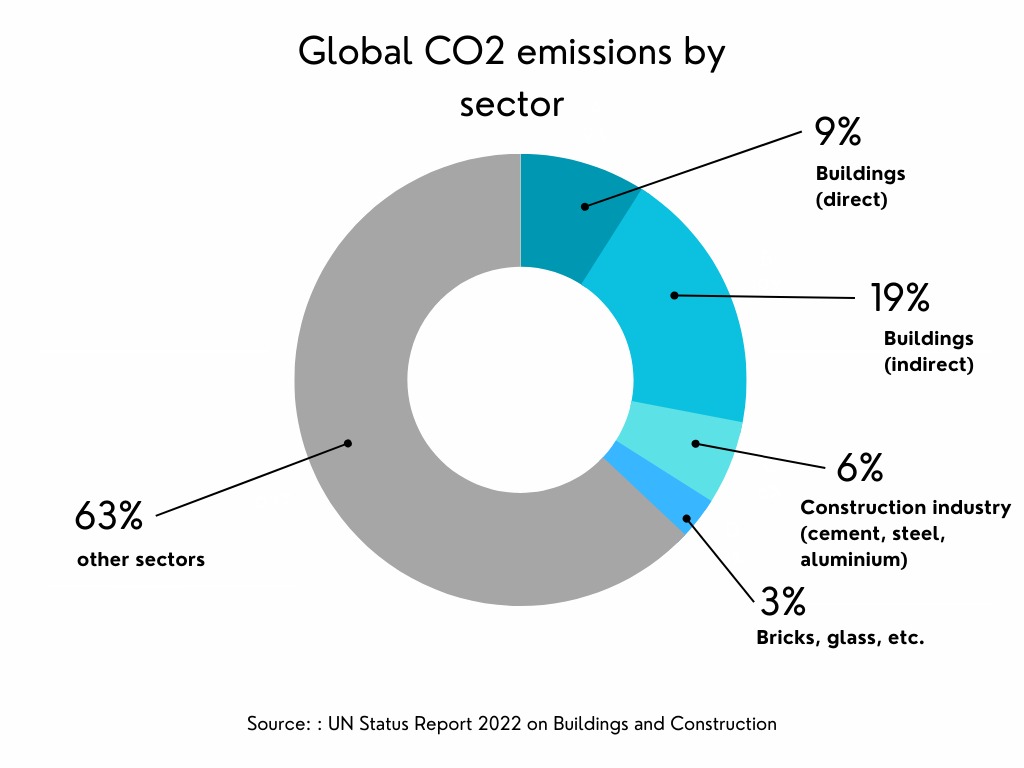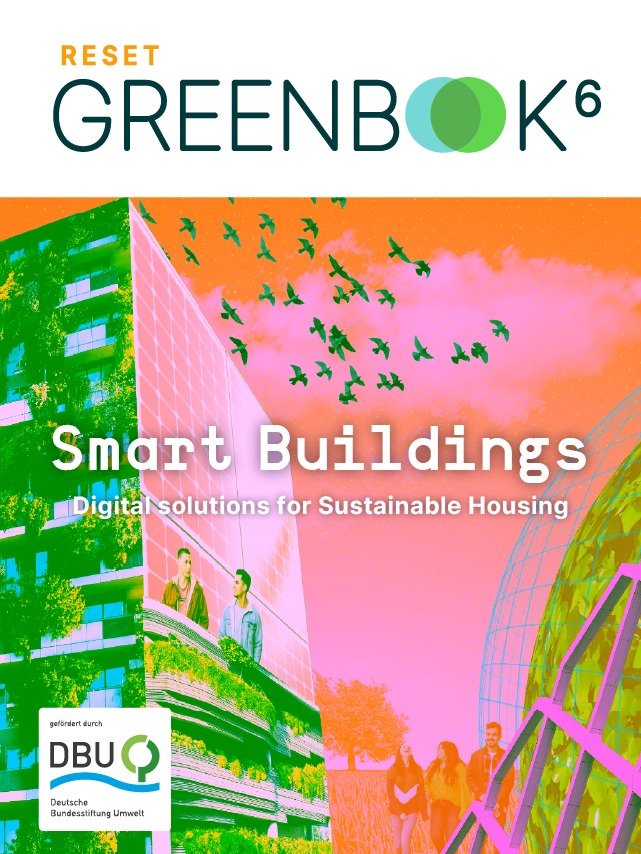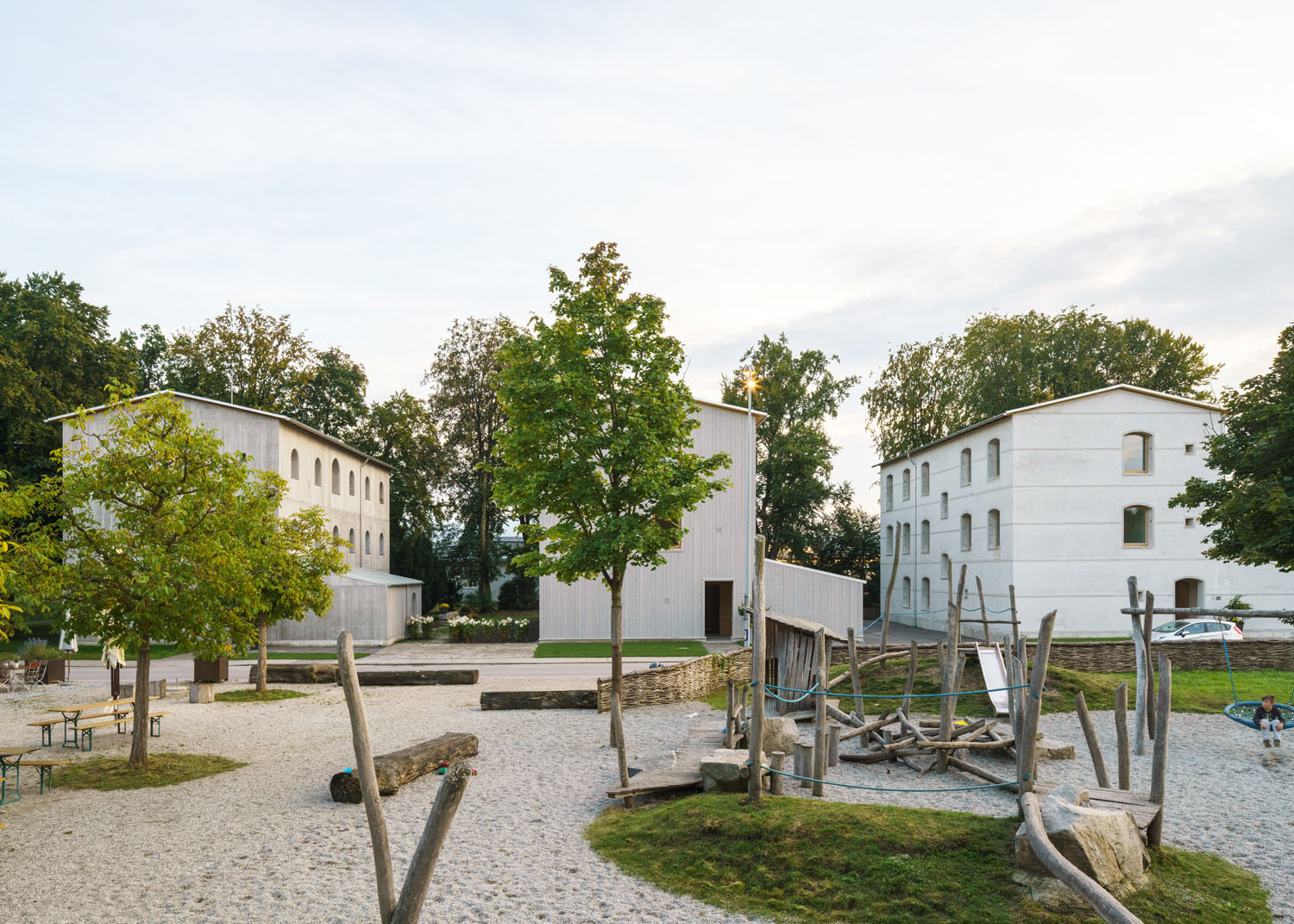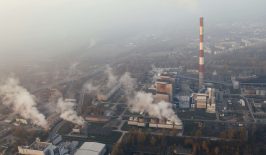The EU has promised that it will become climate-neutral by 2050. To achieve this goal, effective measures are needed in all sectors. We need an energy transition, a transport transition, and an agricultural transition. The building sector is also facing major transformations.
From construction to operation and eventual disposal, buildings are significant contributors to CO2 emissions throughout their lifecycle. In Europe, the construction sector stands out as a major source of emissions. Building operations across in the EU are responsible for 36 percent of greenhouse gas emissions from the energy sector, while the construction sector is responsible for around 50 percent of all extracted materials, It also contributes to over 35 percent of EU waste generation.
Achieving climate neutrality in this sector necessitates ambitious, occasionally disruptive, and well-coordinated measures across all fronts. This goes beyond climate protection; energy savings in buildings also protect tenants and owners from rising energy prices.
But what are the main points of action?
Three measures for a climate-neutral buildings sector
The report Building Strategy Climate Neutrality 2045 (DE), a meta-analysis of various studies commissioned by the Federal Ministry for Economic Affairs and Climate Protection, identifies three key measures:
- The demand for heat from buildings must fall significantly
A significant portion of the sector’s current and future energy needs and emissions stems from existing buildings. Over 90 percent of the energy used in buildings is dedicated to space heating and hot water. The most substantial potential for emissions reduction lies in the energy-efficient renovation of existing buildings. Increasing the renovation rate is crucial; calculations from the Wuppertal Institute suggest a quadrupling of the renovation rate in residential construction to meet climate protection targets. Additionally, there’s a need to substantially enhance the efficiency gains achievable through refurbishment.
- Heating from renewable energy sources
Heat generation must be based almost entirely on renewable energies as soon as possible. Almost all studies agree that heat pumps are the key technology here. In addition, heating networks are of great importance in urban areas. - Resource-efficient construction in new buildings
New buildings must realise the greatest possible potential for reducing CO2 emissions, as buildings constructed today will still require energy in many decades to come. The building design, materials used, and type of heating are decisive for the energy consumption and CO2 emissions over the entire lifecycle of a building. This must be taken into account in all phases.
This underscores the need to rapidly decarbonise the building sector by prioritising the renovation and resource-efficient operation of existing buildings. The Building Strategy Climate Neutrality 2025 report suggests a shift in priority, as new construction requires more skilled workers than refurbishment. The same workforce, when focused on renovation, can have a more substantial impact in reducing CO2 emissions.
Buildings are a CO2 heavyweight: the construction, heating, cooling and disposal of our homes accounts for around 35 percent of the EU’s CO2 emissions. We will only achieve our climate goals if these emissions are massively reduced.
But how can we achieve the sustainable transformation of buildings and what role do digital solutions play in this? The RESET Greenbook provides answers: Building transformation – intelligently transforming houses and neighbourhoods.
The potential of digital technologies in the building transition
Climate change is becoming more noticeable every year, and there is little time left to implement the necessary measures to achieve the climate targets. Innovations and new processes are therefore urgently needed.
Digitalisation has increasingly found its way into the building sector in recent years. Digital technologies are already being used and tested not only in smart homes and smart buildings but also in building operations, renovation measures and the planning of new buildings. So, will new digital technologies provide effective support for the Herculean task of massively reducing CO2 emissions?
The RESET editorial team has explored this question and documented solutions. Here, we offer an overview and attempt to categorise the potential of the various approaches.
– Planning climate-neutral buildings from the outset
Every building constructed today will endure for many decades. The construction, materials employed, and heating system chosen determine its energy consumption and CO2 emissions throughout its “life”. Architects and building owners thus wield significant influence on the lifecycle assessment, even in the early planning phase.
Hence, the “Build Simply” project, based at the Technical University of Munich, has employed simulations to devise houses with minimal energy and resource consumption. The environmental impact and costs of different designs, spatial layouts and technical concepts were calculated—from construction to operation and disposal.
There are now also various providers of software that support architects and developers in the early design phase to optimise energy and ecological dimensions in the planning of buildings. CAALA’s software, for example, visualises the CO2 emissions from construction and operation for each planning variant, thus creating the most comprehensive information basis possible for decisions. By linking all relevant parameters, the software makes it possible to see how changes in individual parameters affect the entire lifecycle.
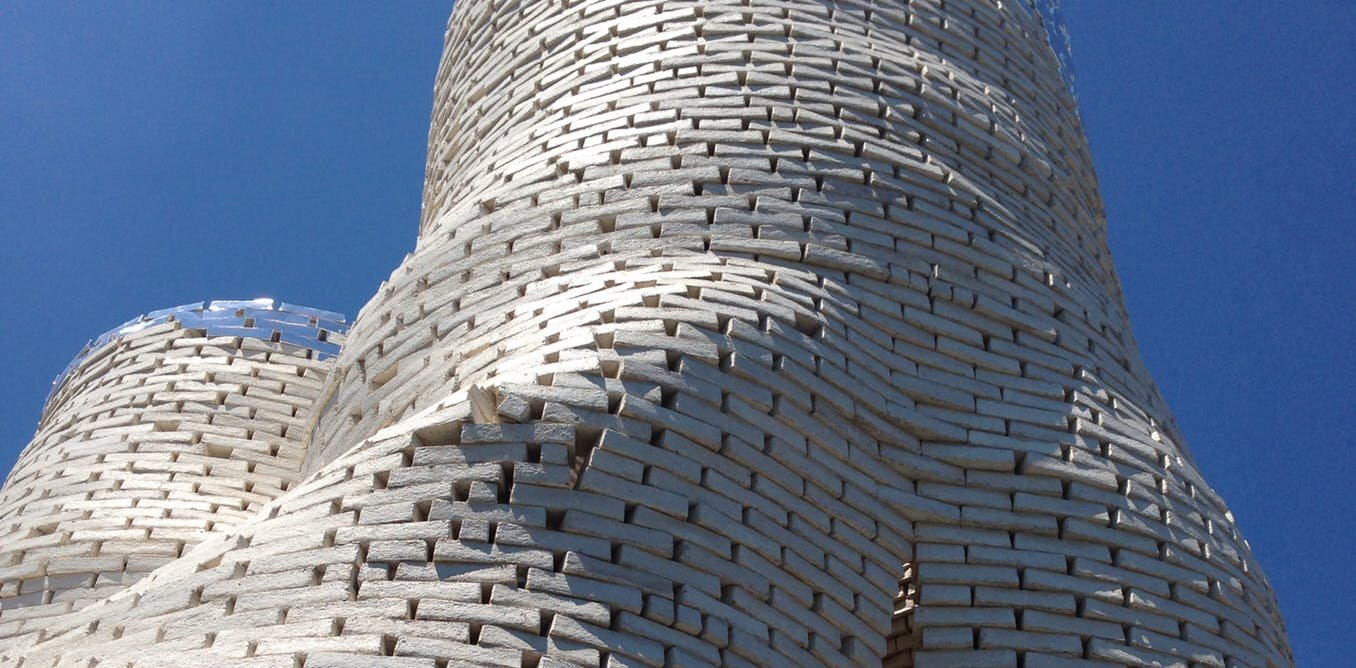
Mushrooms or carbon concrete – what is the house made of?
Germany’s construction industry, responsible for 90% of domestic mineral raw material extraction, is the nation’s most resource-intensive sector. Prioritising sustainable materials is crucial for climate policy. The CUBE in Dresden highlights carbon concrete as a promising material for a building transformation. Mushrooms convert agricultural waste into an affordable, sustainable, and biodegradable building material. Intelligent windows prove cooling rooms without air conditioning is possible.
– Efficient refurbishment
As emphasised, rapid decarbonisation should primarily target emissions from the operation of existing buildings. However, comprehensive refurbishment roadmaps, illustrating the long-term impact of specific measures on CO2 emissions and operating costs, are often lacking. This gap, highlighted by Sibyl Steuwer from the Buildings Performance Institute Europe (BPIE) in an interview with RESET, underscores the need for detailed planning in this crucial area.
Various digital applications provide virtual solutions in this regard. The BIM4REN project, for example, is developing user-friendly tools and services for an adaptable and swift refurbishment process. Primarily intended for serial refurbishment to hasten the refurbishment rate, the standardisation of processes is crucial. Even though each building is unique, refurbishment processes remain essentially the same. “If we have digitally measured the building, know its appearance, and understand the optimal solution, then we can precisely produce in the workshop and still follow a standardised process. An end-to-end digital process is enormously helpful here,” emphasises Steuwer in this context.
Serial refurbishment
Serial refurbishment involves prefabricating façade and roof elements or system technology, such as heat pump modules, off-site and then assembling them on-site. The extensive prefabrication substantially reduces the required materials and time compared to traditional refurbishment methods.
The CAALA software calculates the energy, ecological, and economic impacts of refurbishment measures in a partially automated process, considering the lifecycle. Using a 3D model, actions like thermal insulation, window replacement, and upgrades to heating or PV systems are mapped to show their effects and interactions. This tool helps compare emissions from existing elements and refurbishment measures with the potential reduction during operation, alleviating uncertainties for owners and potentially expediting refurbishment efforts.
However, the use of this and similar planning software has not yet reached the German market. As effective as they can be, most of the applications are only used as part of individual pilot projects. “There are surveys that show that more companies are using such planning tools, but compared to other European countries, Germany is lagging far behind,” reports Sibyl Steuwer.
– Intelligent control of operations
In the medium and long term, building efficiency should be enhanced through refurbishment measures. “In the short term, however, we can bring more transparency to building operations and optimise them using digitalisation, without the need for elaborate refurbishment measures,” said Rita Streblow, Senior Engineer and Team Leader at the Chair of Building and Climate Control Technology at RWTH Aachen University, in an interview with RESET.
In existing buildings, the efficiency of heating, cooling, and ventilation systems significantly impacts energy consumption and, consequently, CO2 emissions. However, both old and new systems often exhibit unnecessary consumption and high losses without optimal operation. Historically, the lack of appropriate technology to record and store data has been a challenge, as outlined in the Climate Neutrality 2045 building strategy.
The primary advantage of digital technologies in building operation lies in rendering all consumption visible, monitoring it, and ideally reducing it through optimisation. For instance, the startup metr utilises remote monitoring for energy consumption and heating and drinking water systems, alongside AI-supported heating optimisation. Their digital platform, referred to as the “digital backbone,” seamlessly integrates all technical systems, irrespective of the manufacturer.
Conversely, aedifion gathers all building data, compiling it into a digital twin continuously analysed by artificial intelligence. The building’s systems are then autonomously optimised and self-learning through AI.
Building automation
Technology and software for the automatic control, regulation and monitoring of buildings has been used since the 1980s and is summarised under the term building automation (BA). However, the technology has changed considerably since then. Today, distributed software and hardware architectures, neural algorithms and applications based on artificial intelligence make it easy to continuously analyse and control complex energy management tasks.
The potential of building automation is immense. Nicolas Réhault, head of the Building Performance Optimisation group at the Fraunhofer Institute for Solar Energy Systems, states that digital tools, bringing transparency to building operation and offering information on optimisation options and deviations, can lead to savings of up to 20 percent. This finding has also been corroborated by various studies. (Beucker, Bergesen, & Gibon, 2016).
However, the greenhouse gas reductions that can actually be achieved through digital technologies are not always easy to determine and depend heavily on the age and condition of the building in question and the system technology, among other things. In addition, technically very similar approaches from different manufacturers can lead to different savings in practice, as Severin Beucker and Simon Hinterholzer from the Borderstep Institute (Bitkom, 2021) also note. And finally, the successful use of the technology also depends on the behaviour of the occupants.
– Networked buildings
Until now, buildings have mostly operated and been controlled independently, with no exchange of electricity or heat between them. However, building automation, in particular, presents an opportunity to intelligently network buildings and apartments with each other and with the energy system. Networking is essential for both reducing energy consumption and sector coupling, where heat is generated. In the latter, for example, heat pumps or combined heat and power plants are connected with electrical generators and storage systems such as PV systems, batteries in buildings, or electric vehicles.
One example of this is the “EnStadt:Pfaff” project. A climate-neutral residential, commercial, and technology district is planned near the city center of Kaiserslautern by 2029. All producers and consumers – including solar systems, heat pumps, electricity storage units, electric cars, and households – are to be connected in a smart grid. By linking local production of renewable energy directly to local consumption with a finely tuned, small-scale control system, the transition to renewable energies for electricity and heat will be facilitated.
Another exemplary project was initiated in the Berlin district of Prenzlauer Berg. As part of the ProSHAPE and WindNODE research projects, six partially renovated existing buildings were equipped with a building automation system comprising networked control components (temperature sensors, control electronics) and software (operating system, optimisation algorithms, software services) to optimise energy consumption. Control variables, such as measured temperatures at room or apartment level or occupants’ defined usage times, are initially recorded. These are then forwarded to a central control unit, responsible for optimising and controlling the central heating system across all usage units. The system has achieved heating energy savings of approximately 24% compared to similar buildings.
–Circular building
Buildings on the verge of demolition harbour numerous resources that can be reused in new constructions—something that rarely happens in practice. Consequently, the construction sector is responsible for about half of the national waste volume in the UK. A successful transformation of the building sector requires not only energy- and resource-efficient planning and operation but also a functioning circular economy in the construction industry.
In the past, information about the materials used or available for reuse and the necessary networking were often lacking. A digital tool aimed at advancing circular construction is the digital Madaster Material Passport. Through comprehensive data collection, all available building information is initially gathered. Madaster, as the central online platform, then stores, manages, and exchanges the collected information about the materials used.
The company Concular takes a step further with its digital Building Resource Passport. With the passport, property owners should have the opportunity to gain an overview of their real estate and its potential for circular construction in all lifecycle phases of the buildings. The passport is intended to support the optimisation of circularity—from planning and existing building refurbishment to dismantling. At the same time, the collected data facilitates the lifecycle assessment of buildings.

Finding used building components – from fire doors to bricks
To successfully embrace circular construction, having a platform for exchanging used materials and components is crucial. Bauteilnetz Deutschland manages a database of regional component exchanges, and a few years back, the Berlin-based company Concular initiated a marketplace for reclaimed construction materials.
The key to lifecycle assessment and circularity evaluation at Madaster and Concular lies in obtaining relevant data through Building Information Modeling, known as BIM, and their subsequent analysis and evaluation.
Moreover, these digital building information models can do even more. They not only assist in better organising the “end-of-life” of buildings but can also consolidate all building-related data in one place, ideally bringing together all stakeholders involved.
– The path to a seamless, digital lifecycle
The current form of the construction sector is a fragmented industry. A typical construction project involves numerous manufacturers, service providers, and suppliers responsible for individual activities and phases. However, for comprehensive improvement in energy and resource consumption in the building sector, widespread data collection, analysis, and continuous monitoring of construction and consumption data are crucial, as shown by the examples mentioned. Because similar measures can lead to very different results depending on the type and equipment of the building.
In addition, establishing a continuous flow of information makes individual planning steps transparent. All stakeholders can see the impact of their actions on other building areas, and various measures can be better coordinated for maximum savings. “In the medium term, we need to address the approach, cooperation of stakeholders, and business models in the building sector to achieve a complete sustainable lifecycle of the building in the long term,” says Rita Streblow.
In this lifecycle, integral planning, BIM represents a paradigm shift. Originally, the underlying software systems were used for visualising and designing buildings. However, these systems can now capture, manage, and make transparent many building-relevant data – architecture, building materials, building and supply technology, as well as dynamic data such as operational measurement data.
Moreover, the systems are easily expandable with ecologically relevant information. This includes precise material composition and origin, as well as the recording of consumption data from energy sources – such as gas and heat quantities and electricity – which are incorporated through building automation, among other things. This means that the models have the potential to become a crucial foundation for capturing and assessing climate protection and energy efficiency potentials, as well as creating lifecycle assessments of buildings.
BIM meets Digital Twin
Building Information Modeling (BIM) can be understood as a static model, while a digital twin is dynamic. The digital twin is a replica of the real object, created from real-time data from sensors.
Both technologies can be used individually, but according to construction industry experts like Daniel Smolilo and Amrita Bajwa, their greatest potential unfolds in their combined application. In the coming years, this could mean establishing a solid planning foundation in construction projects initially with BIM, complemented by a digital twin in building implementation and management, providing detailed real-time information and allowing daily validations for quick adjustments.
In Gießen, BIM is being used to implement the model project EnEff:Stadt FlexQuartier. The goal of this construction project is to plan, construct, and study an energy-efficient neighbourhood with flexible storage technologies. Additionally, the neighbourhood’s flexibility and sector coupling will be analysed. For this research project, the BIM methodology has been modified and adapted to the scale of the neighbourhood and the research focus.
The result is the Neighbourhood Information Model (NIM). NIM includes all the features of the BIM system mentioned earlier but is expanded to include energy-related and evaluative aspects. This aims to establish connections between the previously separate disciplines of energy generation, distribution, and storage with energy demand at the neighbourhood, infrastructure, and building levels – encompassing architecture and structural infrastructure.
BIM as open source software
Many of the BIM systems available in the market are proprietary solutions. Consequently, an international, manufacturer-independent initiative called buildingSMART has emerged, promoting interoperable data exchange with the open source format Industry Foundation Classes (IFC). This initiative aims to create interfaces that facilitate information exchange across various disciplines and formats. Additionally, there are open source project management software options like FreeCAD and OpenProject that include BIM functionalities.
Numerous studies highlight BIM as a catalyst that can significantly reduce the fragmentation of planning and construction processes, enhance efficiency, and lower planning costs. However, routine implementation in the construction industry requires further research and development efforts, with a primary focus on standardised software architectures and industry-wide standardisation measures.
Possible negative environmental effects of digital building technologies
A fundamental question when using digital technologies is their environmental impact. The deployment of resource-intensive sensors and devices, along with the high energy expenditure required for developing and training AI-based applications, raises concerns. Therefore, it’s essential to evaluate the overall lifecycle of these applications, considering not only energy consumption but also manufacturing, raw material extraction, and disposal.
Analyses, such as the Digital Reset report (2023), reveal that positive effects, like energy savings during usage, might be offset by adverse effects, especially when the primary goal is comfort enhancement rather than efficient energy use. To obtain a comprehensive ecological balance, it is crucial to capture all environmentally relevant processes associated with products, services, or procedures. However, obtaining information from manufacturers is challenging, as there is currently no obligation for proof.
Another challenge in the assessment is the consideration of rebound effects, where efficiency improvements can be negated by increased demand. Systematically analysing these effects is complex and depends on various factors. In conclusion, despite many studies attributing a positive overall impact to building automation and similar digital applications in the construction sector, their positive potential can only be fully realised when designed according to sustainable principles. This involves not only having low energy consumption in development and usage but also ensuring the longevity of digital tools, compatibility with other systems, ease of repair, and long-term updates. For more information, see The Digital Footprint – Our Resource Consumption Online.
How can the building transformation succeed?
Three key measures were initially highlighted to effectively reduce the high emissions in the sector. Firstly, there must be a significant reduction in the heat demand of buildings, especially existing ones. Second, the priority should be to source heat mainly from renewable energies. Third, in new constructions, there should be a focus on resource-efficient building.
Various examples have demonstrated how digital solutions can support these tasks in all phases of building life. By making consumption transparent and optimising it, they help conserve heating energy. In renovations, they assist by presenting and assessing various measures. In planning, they can enable the construction of carbon-neutral new buildings through intelligent designs and heating concepts based on renewable energies.
Furthermore, digital technologies play a crucial role in the circular economy by providing solutions for capturing all installed materials and contributing to their reuse. By bringing together all building-related data and information in one place, digital solutions ultimately have the potential to unite all stakeholders throughout the life cycle, thus closing loops. BIM has been mentioned here as a promising digital tool. Severin Beucker and Simon Hinterholzer also note, “If these tools can be made universally usable for the planning and management of building stocks through common architectures as well as data formats and interfaces, effective strategies for CO2 reduction and resource conservation can be developed.”
Despite the proven ability of digital applications to reduce energy and resource consumption in the building sector, saving costs in the long run for tenants, housing companies, and owners, only a few have opted for their use so far. However, with rising energy prices and tightening climate protection regulations in Europe and Germany, digital tools in the construction and real estate industries are primed to gain more prominence.
But what is needed to advance the sustainable digitalisation of the building sector?
A crucial element is a political framework that establishes more binding CO2 reduction targets in the building sector, thereby increasing the pressure for transformation. The current measures by the federal government fall significantly short of achieving the goals in the building sector. Additionally, more ambitious and innovative projects, along with thorough analysis and research, are required. Collaboration among stakeholders from politics, administration, and the housing industry is necessary. To successfully integrate the energy system, mobility sector, and building sector, overarching digitalisation strategies are essential. A first step in this direction is the Smart Readiness Indicator (SRI) mentioned in the 2018 amended EU Building Efficiency Directive. The SRI aims to assess a building’s ability to interact with users and the grid, thus optimising its energy-efficient operation. The SRI is currently being tested in eight member states.
Furthermore, the public sector should take a leading role, as suggested by Rita Streblow, and significantly advance a future-proof municipal building stock.
To ensure that the potentials are realised and digitalisation is done in a measured, not “blind” manner, the environmental impact of the applications themselves should be considered. This can be achieved through eco-design requirements at the federal and EU levels, supporting the sustainability of digital applications.
Finally, it is crucial to design and implement all these measures in a socially compatible manner, as highlighted by the Building Strategy for Climate Neutrality by 2045.

